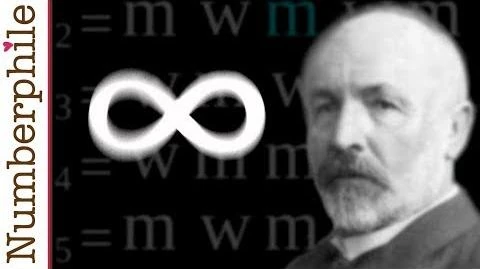- 10,651
- 9,346
I'm a bit bored right now, so let's try this.
On this thread it was brought up that MLP could not only qualify for 2-A (Which is currently accepted), but Low 1-C. I will explain why.
I would like to premise this by saying I want to keep this thread short and to the point. One of my issues with many tier 1 threads is that they often aren't accessible to more casual users because they're super long and intricate, making it difficult to understand and talk about...
With that being said, the argument for this should be simple. I am only going to link stuff that's already been linked before, in fact.
Dreams are accepted as being real, universal structures, as per the threads linked above. This is Low 2-C on its own.
Within dreams, there exists hallways of infinite doors that lead to infinite different possibilities. This is 2-A. And what is currently used for their tiering justification.
Every door in this hallway leads to another hallway of infinite doors, ad infinitum. And the Dreamscape encompasses all of this (Another source). This... This is Low 1-C.
Why? It's simple, really.
Every possibility leads to infinite more possibilities, which themselves lead to infinite more possibilities, again, and again, and again... infinitely.
So, after one recursion, that's infinite x infinite possibilities, another is infinite x infinite x infinite possibilities, and another is infinite x infinite x infinite x infinite possibilities, and so on. Luna implies that this never ends.
An infinite recursion of that would be equivalent to infinity^infinity (Aleph-0^Aleph-0), which is uncountably infinite possibilities.
This be because of the Continuum Hypothesis. Put simply, this says that 2^Aleph-0 is equal Aleph-1. A theory that is taken as a fact on this wiki.
The current standard is that uncountable infinite universes (uncountably infinite 4-Dness, I suppose), is equivalent to a 5-D structure in scope. Thus, significantly affecting something the encompasses that would be Low 1-C in potency.
I am a bit 50/50 in confidence on whether this will be accepted or rejected. I just really want to see if this qualifies.
Vote Tally
Bold = Staff Opinions (Discussion Moderators, Administrators, and Bureaucrats)
Italic = Knowledgeable Members' Opinions (Verse Supporters, Content Moderators, and others demonstrating great knowledge on this topic)
Apologies if this ends up @ing you at some point. It is just me editing the vote count.
Those in agreement: (18) @KingNanaya, @DivineAura44, @Deidalius, @OverlordDonnelly, @Syncornize, @The_Fastest_Savior, @Robo432343, @Lightbuster30, @DarkDragonMedeus, @Maverick_Zero_X, @ShivaShakti, @FinePoint, @CinnabarManx421, @ThanatosX, @Vietthai96, @Tonygameman, @Georredannea15 (Possibly Low 1-C, I think)
Those in disagreement:
Those yet to form an opinion: @Firestorm808
On this thread it was brought up that MLP could not only qualify for 2-A (Which is currently accepted), but Low 1-C. I will explain why.
I would like to premise this by saying I want to keep this thread short and to the point. One of my issues with many tier 1 threads is that they often aren't accessible to more casual users because they're super long and intricate, making it difficult to understand and talk about...
With that being said, the argument for this should be simple. I am only going to link stuff that's already been linked before, in fact.
Dreams are accepted as being real, universal structures, as per the threads linked above. This is Low 2-C on its own.
Within dreams, there exists hallways of infinite doors that lead to infinite different possibilities. This is 2-A. And what is currently used for their tiering justification.
Every door in this hallway leads to another hallway of infinite doors, ad infinitum. And the Dreamscape encompasses all of this (Another source). This... This is Low 1-C.
Why? It's simple, really.
Every possibility leads to infinite more possibilities, which themselves lead to infinite more possibilities, again, and again, and again... infinitely.
So, after one recursion, that's infinite x infinite possibilities, another is infinite x infinite x infinite possibilities, and another is infinite x infinite x infinite x infinite possibilities, and so on. Luna implies that this never ends.
An infinite recursion of that would be equivalent to infinity^infinity (Aleph-0^Aleph-0), which is uncountably infinite possibilities.
This be because of the Continuum Hypothesis. Put simply, this says that 2^Aleph-0 is equal Aleph-1. A theory that is taken as a fact on this wiki.
The current standard is that uncountable infinite universes (uncountably infinite 4-Dness, I suppose), is equivalent to a 5-D structure in scope. Thus, significantly affecting something the encompasses that would be Low 1-C in potency.
I am a bit 50/50 in confidence on whether this will be accepted or rejected. I just really want to see if this qualifies.
Vote Tally
Bold = Staff Opinions (Discussion Moderators, Administrators, and Bureaucrats)
Italic = Knowledgeable Members' Opinions (Verse Supporters, Content Moderators, and others demonstrating great knowledge on this topic)
Apologies if this ends up @ing you at some point. It is just me editing the vote count.
Those in agreement: (18) @KingNanaya, @DivineAura44, @Deidalius, @OverlordDonnelly, @Syncornize, @The_Fastest_Savior, @Robo432343, @Lightbuster30, @DarkDragonMedeus, @Maverick_Zero_X, @ShivaShakti, @FinePoint, @CinnabarManx421, @ThanatosX, @Vietthai96, @Tonygameman, @Georredannea15 (Possibly Low 1-C, I think)
Those in disagreement:
Those yet to form an opinion: @Firestorm808
Last edited by a moderator:
